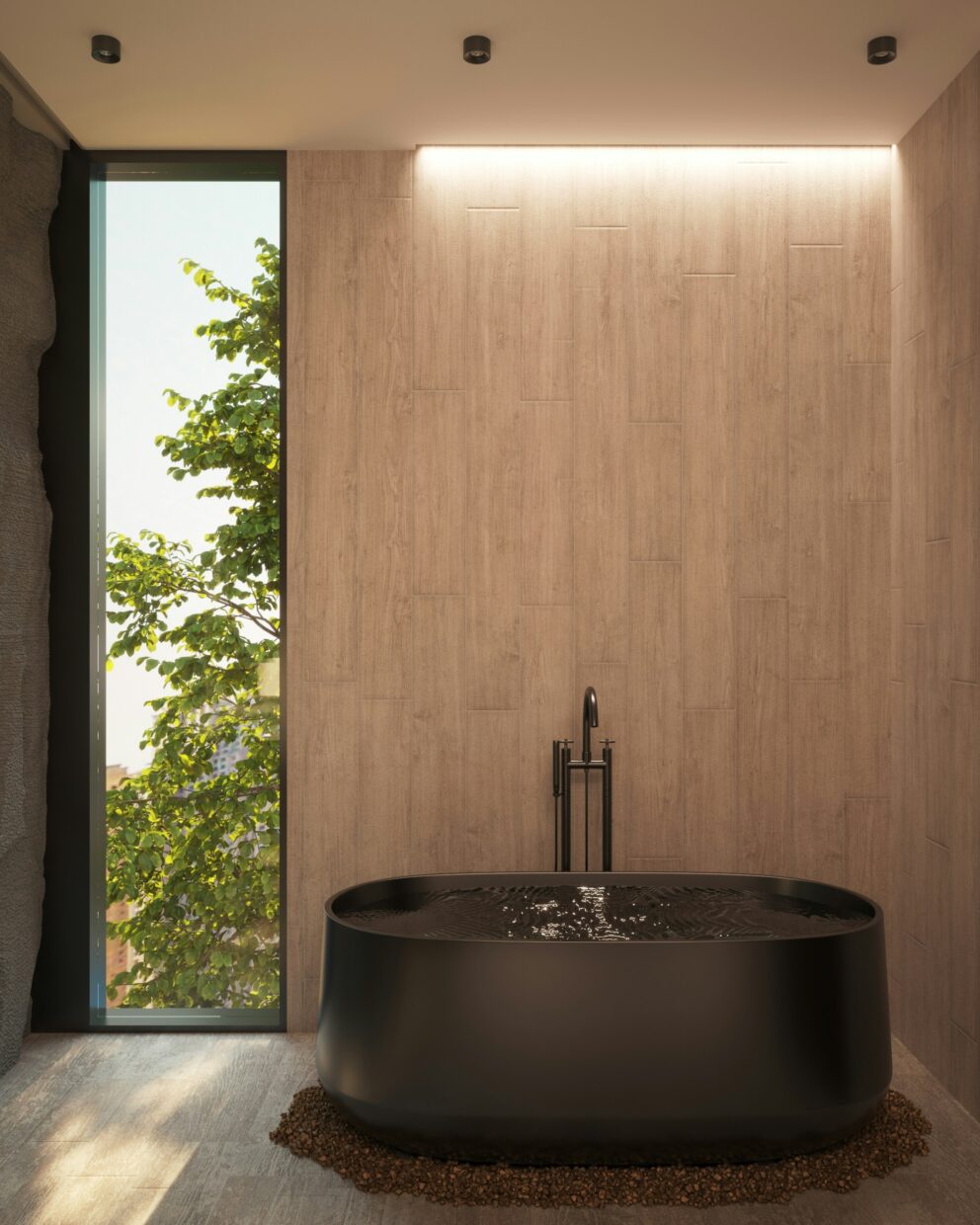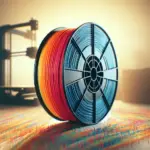
- arrow_back Home
- keyboard_arrow_right 3D Printing
Best 3D Printing Filament for Strength and Versatility

3D Printing Chris Wyatt 4 June 2024
Best 3D Printing Filament for Strength and Versatility”
In the ever-evolving world of 3D printing, finding the perfect filament for strength and versatility is crucial for achieving durable and functional prints. The article delves into the top choices for filament materials, examining their unique properties and ideal applications. From the robust Polycarbonate (PC) that excels in creating high-impact strength parts to the versatile Nylon, which offers impressive resilience and flexibility, readers will discover the best options to suit their specific project needs. Whether they are crafting automotive components, custom tools, or intricate prototypes, understanding the strengths and uses of each filament type will elevate their 3D printing endeavors. Have you ever wondered what the best 3D printing filament for strength and versatility is? With so many options available, it can be challenging to find the perfect material for your specific needs. In this article, we will explore various filaments, discussing their strengths, weaknesses, and ideal use cases to help you make an informed decision.
Understanding 3D Printing Filaments
Before we dive into the best filaments for strength and versatility, it’s essential to understand what 3D printing filaments are and how they differ from one another. 3D printing filaments are thermoplastic feedstocks used in Fused Deposition Modeling (FDM) 3D printers. These filaments are heated to a melting point and extruded layer by layer to create 3D objects.
The versatility of a filament depends on its material properties, including tensile strength, flexibility, ease of printing, and resistance to environmental factors. Let’s break down some of the most commonly used filaments in 3D printing.
PLA (Polylactic Acid)
PLA is one of the most popular and commonly used filaments in 3D printing. It is a biodegradable thermoplastic derived from renewable resources like cornstarch or sugarcane.
Strengths:
- Easy to print
- Biodegradable
- Excellent surface finish
Weaknesses:
- Brittle
- Low heat resistance
Use Cases:
- Prototyping
- Educational purposes
- Decorative objects
ABS (Acrylonitrile Butadiene Styrene)
ABS is a petroleum-based filament known for its toughness and impact resistance. It can withstand higher temperatures compared to PLA.
Strengths:
- Durable
- Heat resistant
- Impact resistant
Weaknesses:
- Warps easily
- Requires a heated bed
- Fumes during printing
Use Cases:
- Functional prototypes
- Automotive parts
- Consumer goods
PETG (Polyethylene Terephthalate Glycol)
PETG is a glycol-modified version of PET commonly used in food and drink containers. It combines the ease of printing of PLA with the durability of ABS.
Strengths:
- Strong
- Flexible
- Chemical resistant
Weaknesses:
- Prone to stringing
- Sensitive to moisture
Use Cases:
- Mechanical parts
- Enclosures
- Food packaging
Nylon
Nylon is a synthetic polymer known for its high strength and flexibility. It is often used in industrial applications due to its durability.
Strengths:
- Extremely strong
- Flexible
- Wear resistant
Weaknesses:
- Absorbs moisture
- Requires high printing temperature
- Warps easily
Use Cases:
- Gears
- Wear-resistant parts
- Functional prototypes
TPU (Thermoplastic Polyurethane)
TPU is a flexible filament that combines the durability of plastics with the elasticity of rubber. It is ideal for applications requiring flexibility and resilience.
Strengths:
- Highly flexible
- Durable
- Impact resistant
Weaknesses:
- Difficult to print
- Requires specialized extruder
Use Cases:
- Flexible hinges
- Wearables
- Seals
Comparing Filaments for Strength and Versatility
When choosing a filament for your 3D printing project, it’s essential to consider both its strength and versatility. The following table provides a quick comparison of the most common filaments discussed above:
| Filament | Strength | Versatility | Ease of Printing | Ideal Use Cases |
|---|---|---|---|---|
| PLA | Moderate | High | Easy | Prototyping, Educational purposes, Decorative objects |
| ABS | High | Moderate | Moderate | Functional prototypes, Automotive parts, Consumer goods |
| PETG | High | High | Moderate | Mechanical parts, Enclosures, Food packaging |
| Nylon | Very High | Low | Difficult | Gears, Wear-resistant parts, Functional prototypes |
| TPU | Moderate | High | Difficult | Flexible hinges, Wearables, Seals |
Each filament has unique properties that make it suitable for specific applications. By comparing their strengths, versatility, ease of printing, and ideal use cases, you can make a more informed decision on the best filament for your needs.

Detailed Analysis of Each Filament
Let’s dive deeper into each filament’s characteristics to provide a more comprehensive understanding of their strength, versatility, and best use cases.
PLA: The Beginner’s Choice
PLA is often the beginner’s choice due to its ease of use and excellent print quality. It is compatible with most 3D printers and requires minimal settings adjustments.
Strength Analysis:
While PLA isn’t the strongest filament available, it has sufficient strength for many applications. Its low melting point means it’s not suited for high-temperature environments, but it’s perfect for creating detailed and aesthetically pleasing prints.
Versatility Analysis:
PLA’s versatility shines in educational and prototyping settings. It is available in a wide range of colors and finishes, including matte, glossy, and even wood-filled. However, its brittleness can limit its use in functional applications that require durability.
Best Use Cases:
- Prototyping: Ideal for creating quick and detailed prototypes.
- Educational purposes: Perfect for classroom settings due to its ease of use.
- Decorative objects: Great for creating decorative items and home décor due to its excellent surface finish.
ABS: The Durable Option
ABS is known for its toughness and durability, making it a popular choice for functional parts and applications needing impact resistance.
Strength Analysis:
ABS is a strong filament capable of withstanding higher temperatures and physical stress. It offers better impact resistance compared to PLA, making it suitable for more demanding applications.
Versatility Analysis:
Despite its durability, ABS can be challenging to print due to its tendency to warp and emit fumes during the printing process. It typically requires a heated bed and an enclosure to maintain stable temperatures.
Best Use Cases:
- Functional prototypes: Excellent for creating functional prototypes that need to endure physical stress.
- Automotive parts: Suitable for car parts due to its resilience and heat resistance.
- Consumer goods: Ideal for items like phone cases and plastic toys that require durability.
PETG: Combining the Best of PLA and ABS
PETG is a popular filament that combines the strengths of PLA and ABS. It is known for its strength, flexibility, and ease of printing.
Strength Analysis:
PETG offers excellent strength and is less prone to cracking than PLA and ABS. It provides a good balance of stiffness and durability, making it ideal for various applications.
Versatility Analysis:
Its chemical resistance and food-safe properties make PETG highly versatile. While it can be prone to stringing and requires careful bed adhesion, it remains a favorite among hobbyists and professionals alike.
Best Use Cases:
- Mechanical parts: Ideal for functional and mechanical parts due to its strength and durability.
- Enclosures: Suitable for creating robust enclosures that protect sensitive electronics.
- Food packaging: Perfect for food-safe applications, such as containers and bottles.
Nylon: The Industrial Standard
Nylon is a top choice for industrial applications due to its outstanding strength, durability, and flexibility.
Strength Analysis:
Nylon is one of the strongest 3D printing filaments available. It offers exceptional tensile strength and can endure high levels of stress and strain without breaking.
Versatility Analysis:
However, Nylon is not without its challenges. It is hygroscopic, meaning it absorbs moisture from the air, which can affect print quality. It also requires higher temperatures to print, making it less suitable for beginners.
Best Use Cases:
- Gears: Ideal for making gears due to its strength and wear resistance.
- Wear-resistant parts: Perfect for creating parts that experience friction and wear, such as bushings and bearings.
- Functional prototypes: Suitable for functional prototypes that need to endure mechanical stress.
TPU: The Flexible Contender
TPU stands out for its flexibility and durability, making it suitable for applications that require both.
Strength Analysis:
While not the strongest filament in terms of rigidity, TPU offers excellent impact resistance and flexibility. It can bend and stretch without breaking, making it ideal for resilient applications.
Versatility Analysis:
TPU can be challenging to print due to its flexibility, which can make it difficult to feed through the printer’s extruder. However, its versatility in creating flexible, durable parts makes it a valuable filament for specific use cases.
Best Use Cases:
- Flexible hinges: Ideal for creating flexible and durable hinges.
- Wearables: Suitable for wearable items like wristbands and phone cases due to its elasticity.
- Seals: Perfect for creating seals and gaskets that require flexibility and resilience.
Factors to Consider When Choosing a Filament
When selecting a filament for your 3D printing project, several factors should be taken into account:
Strength vs. Flexibility
Consider whether your project requires a rigid and strong material or a flexible one. Materials like PLA and ABS offer rigidity and strength, while TPU provides flexibility and resilience.
Printability
Some filaments are easier to print than others. PLA is known for its ease of printing, while materials like Nylon and TPU require more advanced settings and equipment.
Environmental Resistance
Consider the environmental conditions your printed object will be exposed to. Materials like PETG and ABS offer better heat and chemical resistance compared to PLA.
Application
The end-use of your printed object will also dictate the choice of filament. Functional prototypes and mechanical parts may require stronger materials like ABS or Nylon, while decorative items can be printed using PLA.
Cost
Finally, consider the cost of the filament. Some materials, like PLA, are more affordable, while specialized materials like Nylon and TPU can be more expensive.

Advanced Filaments for Specialized Applications
As 3D printing technology advances, new filaments are being developed to cater to more specialized applications. Some of these advanced filaments offer unique properties that make them suitable for specific industries and use cases.
Carbon Fiber Reinforced Filaments
Carbon fiber reinforced filaments combine the properties of base materials like PLA, ABS, or Nylon with the added strength of carbon fibers. These filaments offer exceptional strength-to-weight ratios and improved rigidity.
Strengths:
- High strength-to-weight ratio
- Improved rigidity
- Reduced warping
Weaknesses:
- Abrasive to printer nozzles
- Requires hardened steel nozzles
Best Use Cases:
- Aerospace components
- High-performance prototypes
- Lightweight mechanical parts
Polycarbonate (PC)
Polycarbonate is a high-strength, impact-resistant filament known for its transparency and durability. It is often used in applications requiring high impact resistance and optical clarity.
Strengths:
- Extremely durable
- High impact resistance
- Transparent
Weaknesses:
- Requires high printing temperatures
- Prone to warping
- Difficult to print
Best Use Cases:
- Protective covers
- Transparent enclosures
- High-impact mechanical parts
Tips for Successful 3D Printing with Different Filaments
Regardless of the filament you choose, there are some general tips that can help ensure successful 3D printing:
1. Proper Bed Adhesion
Ensure your print bed is properly leveled and use appropriate adhesives like glue sticks, hairspray, or specialized adhesion sheets to prevent warping and improve bed adhesion.
2. Temperature Control
Use the recommended printing temperatures for each filament to ensure optimal extrusion and layer bonding. For materials that require high temperatures, consider using an enclosure to maintain a stable printing environment.
3. Dry Filament Storage
Store your filaments in airtight containers with desiccants to prevent moisture absorption, which can negatively affect print quality.
4. Regular Maintenance
Regularly clean and maintain your 3D printer to prevent clogs and ensure consistent print quality. This includes cleaning the nozzle, checking the extruder, and lubricating moving parts.
5. Experiment and Iterate
Don’t be afraid to experiment with different settings and materials to find what works best for your specific project. Iteration is a key part of the 3D printing process, and learning from each print can help you achieve better results over time.

Conclusion
Choosing the best 3D printing filament for strength and versatility depends on your specific needs and applications. PLA offers ease of use and excellent print quality for prototyping and educational purposes, while ABS provides durability for functional parts. PETG combines the strengths of PLA and ABS, making it a versatile choice for various applications. Nylon stands out for industrial uses due to its exceptional strength and wear resistance, and TPU offers flexibility for specialized applications.
By understanding the properties, strengths, weaknesses, and ideal use cases of each filament, you can make an informed decision and achieve the best results with your 3D printing projects. Whether you’re a hobbyist or a professional, selecting the right filament is crucial for creating high-quality and functional 3D printed objects.
About Ultimate 3D
Learn everything there is to know about 3D Printers and the different components and printing materials.
Site Links
Copyright 2024 Ultimate 3D










Be the first to leave a comment